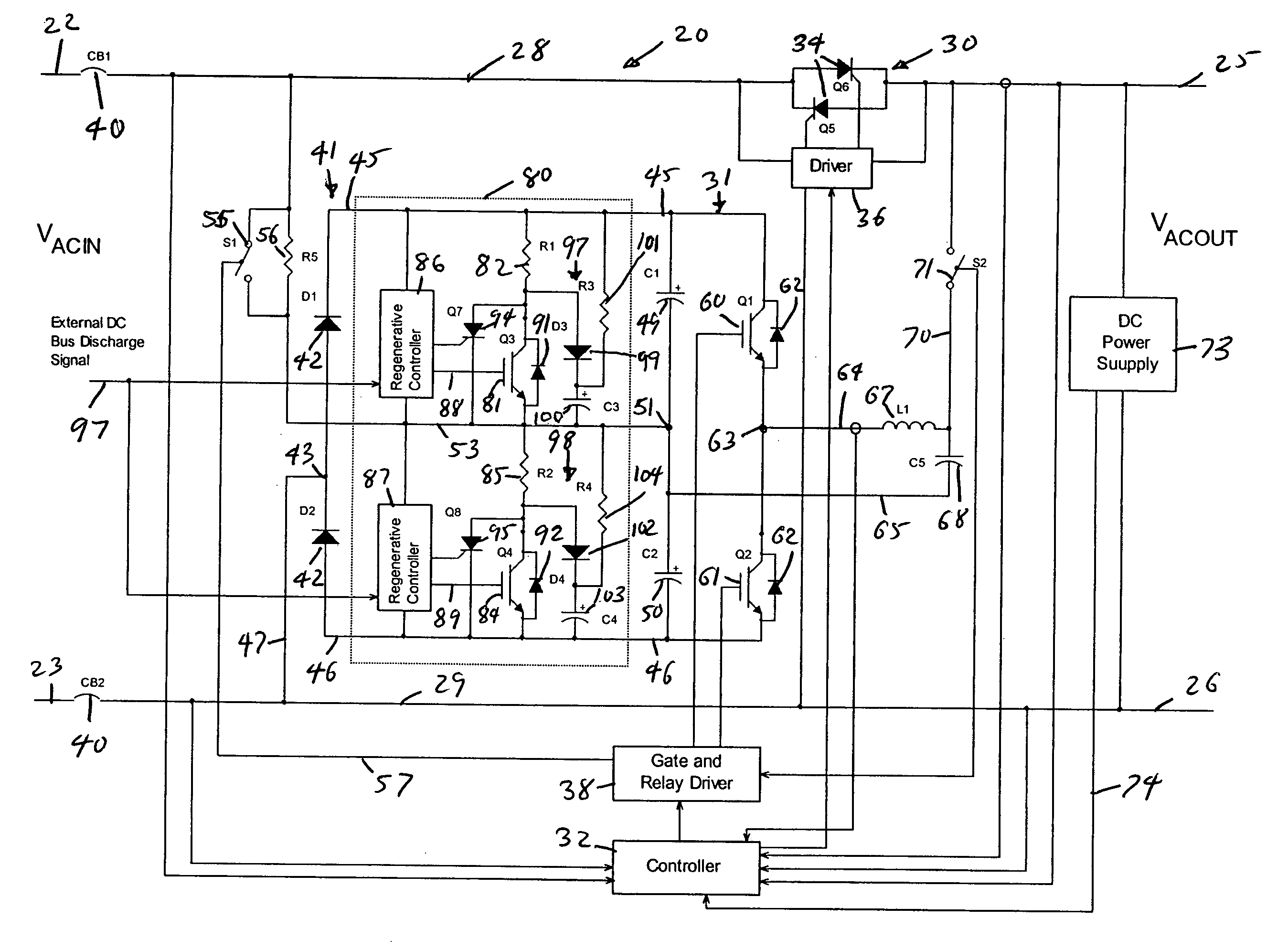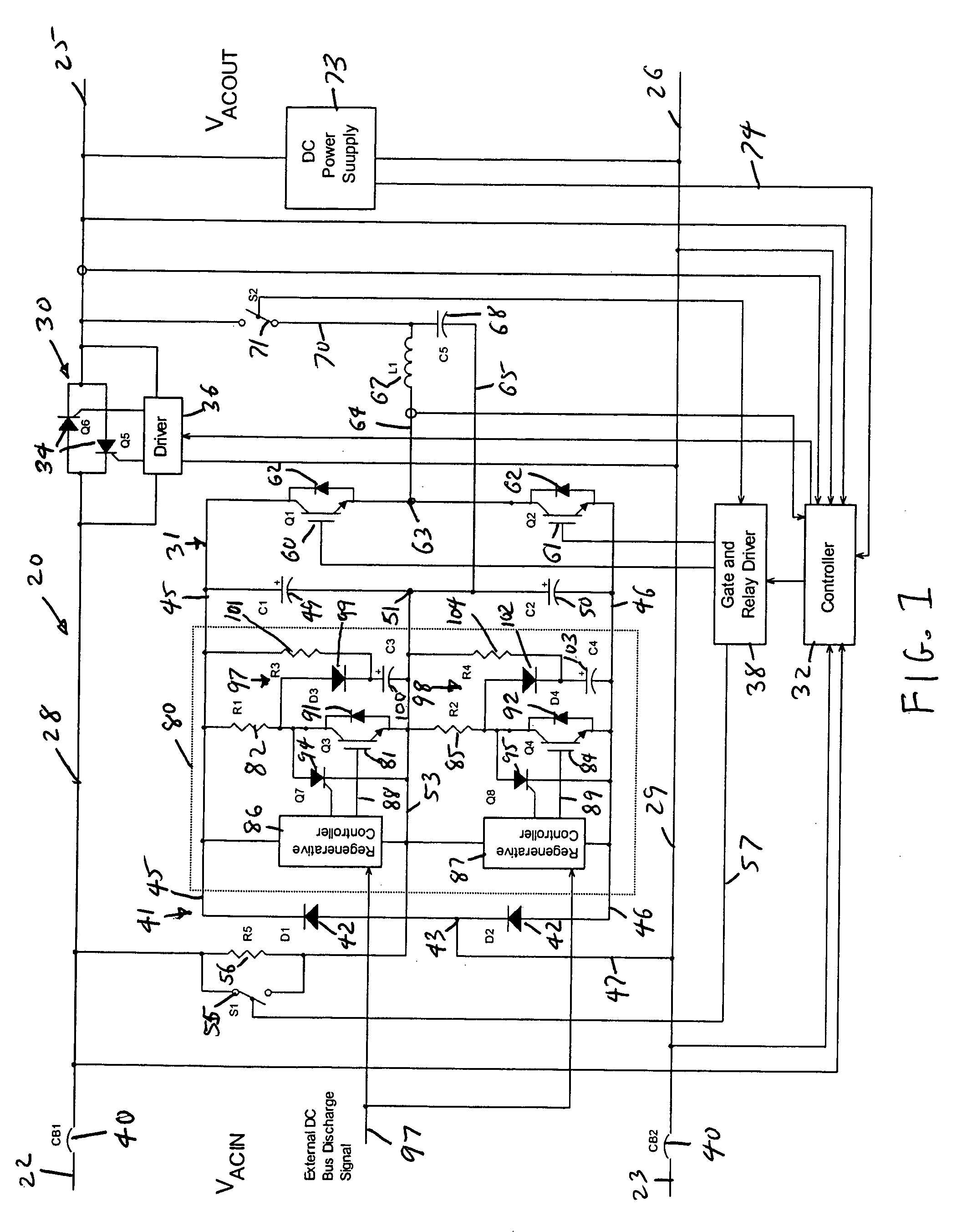Power conversion and voltage sag correction with regenerative loads
a technology of regenerative load and power conversion system, which is applied in the direction of emergency power supply arrangement, process and machine control, instruments, etc., can solve the problems of power sag and swell, power supply failure, equipment damage, etc., and achieve low cost, high reliability, and high efficiency.
- Summary
- Abstract
- Description
- Claims
- Application Information
AI Technical Summary
Benefits of technology
Problems solved by technology
Method used
Image
Examples
Embodiment Construction
[0014] The present invention may be implemented as a power conversion module capable of supplying AC power to potentially regenerative loads for applications such as motor drives, power conditioning equipment including battery energy storage UPS, and dynamic voltage sag correctors with capacitive energy storage. The present invention is particularly well suited to be incorporated in a dynamic voltage sag corrector having capacitive energy storage to protect against over-voltage conditions that can occur under regenerative load conditions. The present invention will be described below implemented in a dynamic voltage sag corrector, although it is understood that the power conversion module of the invention may be utilized in other applications.
[0015] As shown generally at 20 in FIG. 1, a dynamic voltage sag corrector in accordance with the invention receives AC power at a voltage Vacin from a power source (e.g., utility lines) on AC power input lines 22 and 23, and delivers AC power...
PUM
 Login to View More
Login to View More Abstract
Description
Claims
Application Information
 Login to View More
Login to View More - R&D
- Intellectual Property
- Life Sciences
- Materials
- Tech Scout
- Unparalleled Data Quality
- Higher Quality Content
- 60% Fewer Hallucinations
Browse by: Latest US Patents, China's latest patents, Technical Efficacy Thesaurus, Application Domain, Technology Topic, Popular Technical Reports.
© 2025 PatSnap. All rights reserved.Legal|Privacy policy|Modern Slavery Act Transparency Statement|Sitemap|About US| Contact US: help@patsnap.com



